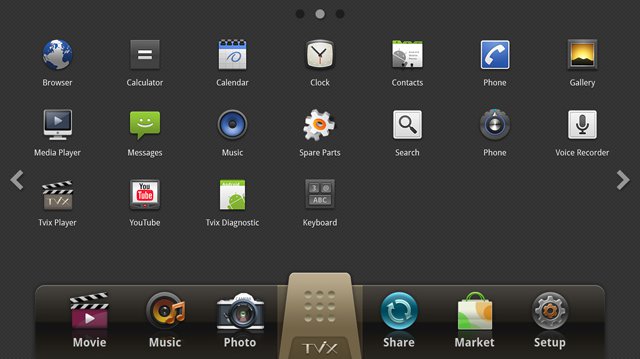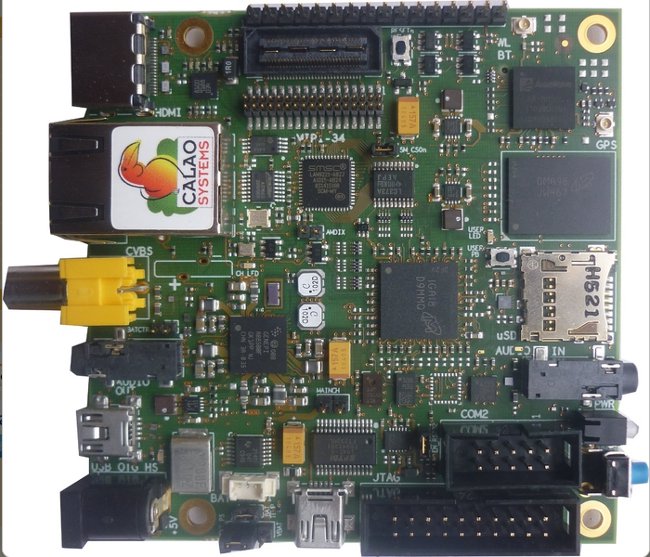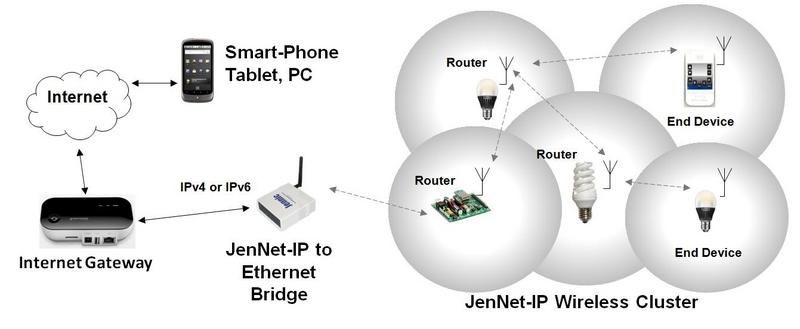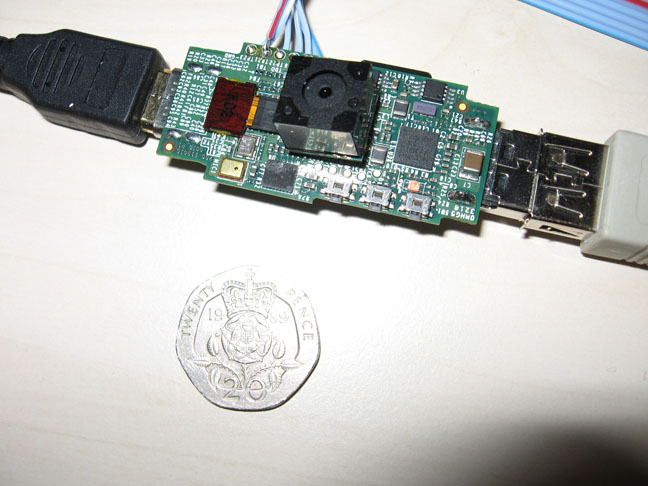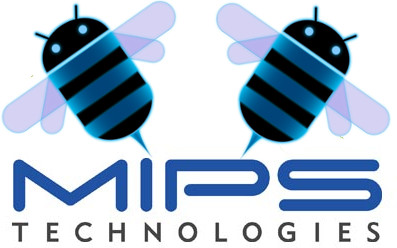Back in November 2010, Sigma Designs and Dvico announced the first Android Set-top Box based on SMP8656 series would be available by Q1 2011. However, porting Android to a media player platform is rather time consuming and TViX XROID A1 is not yet available (August 2011). Digital Versus got a pre-release version, but the firmware is still not stable enough for them to provide a meaningful review. Dvico has nonetheless setup a webpage for XROID A1 with the specifications, features, firmware and user manual for the lucky ones that could get a pre-release hardware. Here’s a summary of the specifications: Main Chipset Sigma Design SMP8657 + Android 2.2 (Froyo) Memory Main: 512MB DDR SDRAM / Flash: 512MB Maximum Resolution up to 1920 x 1080P Video Formats (Containers) MKV, AVI, VOB, ASF, WMV, MPEG1/2/4 Elementary, MPEG1/2 PS: M2P, MPG, MPEG2 Transport Stream: TS, TP, TRP, M2TS, MTS, MOD, and TOD, ISO, […]
Calao Snowball Development Boards Are now Available
Earlier in February, ST Ericsson had announced the availability of development boards running Linaro based on their Nova A9500 processor. 4 different development kits based on this platform can now be purchased online on Calao store: SKY-S9500-ULP-C22 (SNOWBALL SDK LITE – Without WLAN/BT/GPS) – 155.73 Euros SKY-S9500-ULP-C32 (SNOWBALL PDK LITE – Without WLAN/BT/GPS) – 226.22 Euros SKY-S9500-ULP-C12 (SNOWBALL SDK) – 164.59 Euros SKY-S9500-ULP-C02 (SNOWBALL PDK) – 241.47 Euros The differences between the SDK (Software Development Kit) and PDK (Production Development Kit) are that the former has no expansion connectors, no battery backup for RTC and only support serial over USB port (for Linux console). Finally, the PDK has a larger e-MMC (8GB vs. 4GB). The price mentioned above exclude VAT (if applicable) and shipping costs. Please note that the boards can be shipped to many countries but not anywhere worldwide (e.g. Shipping is not available to Thailand) and you’ll need to […]
NXP to release “Internet of Things” source code
Up to now, mainly people were using the Internet, but now things connect to the internet without human beings intervention for data collection (sensors) in order to improve the efficiency of different systems, this is what is called the “Internet of Things”. Watch IBM introduction to the Internet of things if you are not familiar with the concept. NXP recently announced the JenNet-IP software will be available under an open-source licence in Q4 2011. JenNet-IP is an ultra-low-power, IEEE 802.15.4-based wireless connectivity network layer software stack. Key features of the JenNet-IP networking software include: Highly robust, easily scalable, self-healing tree network proven at over 500 nodes Proven in a variety of residential and industrial applications, including asset management, lighting, solar and building control IP-based networking to enable the Internet of Things Gateway or non-gateway options for connection to the Internet or stand-alone operation Easy-to-use, elegant and extensible SNAP object-oriented API […]
Ziilabs announced the ZMS-20 aimed at Android 3.0 Tablets
Here’s how Ziilabs describes their new dual core processor aimed at tablets running Android honeycomb: The ZMS-20 has been engineered for high-resolution tablet computing and combines ZiiLABS’ StemCell media processing array with dual 1.5GHz ARM Cortex-A9 MPCore processors (with Neon) to deliver stunning 1080p high profile video playback, immersive OpenGL ES 2.0 3D graphics, HD video calling and a rich desktop browsing experience including Adobe Flash Player. With multi-core application acceleration and dynamic power management for longer battery life the ZMS-20 delivers the efficient, high-performance platform required for the next generation of devices, including Android 3.0 based tablets. ZMS-20 Key Features: Dual 1.5GHz ARM Cortex A9 cores with Neon ZiiLABS flexible Stemcell media processing capabilities Low-energy SIMD architecture for high performance media acceleration 48 x 32-bit floating point media processing cores for 26GFlops of compute High Profile H.264 video playback at 1080p@30fps Wide range of accelerated video codecs including H.264, […]
25 USD ARM11 Linux Computer
The Raspberry Pi Foundation has designed a 25 USD Linux computer prototype for computer education in both the developing and developed worlds. The foundation, a registered British charity, plans to develop, manufacture, and distribute the USB key-sized computer within the next 12 months. Their computer has a USB key form factor and is designed to plug into a TV or be combined with a touch screen for a low-cost tablet. Provisional specifications: 700MHz ARM11 128MB of SDRAM OpenGL ES 2.0 1080p30 H.264 high-profile decode Composite and HDMI video output USB 2.0 SD/MMC/SDIO memory card slot General-purpose I/O Open software (Ubuntu, Iceweasel, KOffice, Python) This device is much cheaper than OLPC XO (target price 100 USD), however, it does not include a keyboard, display nor batteries, so the market is different as it won’t work in places where electricity is unreliable. Watch the video below of David Braben introducing the 25 […]
Yocto Project: Build Your Own Custom Embedded Kernel Image
The Yocto Project is an open source collaboration project that provides templates, tools and methods to help you create custom Linux-based systems for embedded products regardless of the hardware architecture. The first official release (Yocto Project 1.0) has been made available on the 6th of April 2011. Yocto Project Overview See this short video presentation of the Yocto Project which explains its goals. It’s a complete embedded Linux development environment with tools, metadata, and documentation – everything you need such as emulation environments, debuggers, an Application Toolkit Generator, etc… It is not a new build system however such as buildroot, instead it relies on the Poky build tools that provide an open source development environment targeting the ARM, MIPS, PowerPC and x86 architectures. Here’s what the Yocto Project provides: A recent Linux kernel along with a set of system commands and libraries suitable for the embedded environment. System components such […]
Qualcomm Officially Releases its Augmented Reality SDK
Qualcomm has just released the official release of their Augmented Reality SDK with Unity 3.0 Support: Qualcomm Incorporated (NASDAQ: QCOM) today announced the immediate commercial availability of its Augmented Reality (AR) Platform for Android smartphones. Offered through Qualcomm’s online developer network, this 1.0 release marks the successful completion of the Company’s beta program. Developers can now build, market and commercially distribute applications based on the Qualcomm AR platform. … The platform supports multiple development environments. The Qualcomm AR Android SDK supports native Android development with the Android tool chain, including the Android SDK and NDK. The Qualcomm AR Unity Extension supports rapid development with the Unity 3 game development tool. A web application is also included for creating and managing image resources that can be used with either development environment. You may have check out the complete QCAR SDK Press Release. You can download the the latest Qualcomm SDK and […]
MIPS is Porting Android 3.0 (Honeycomb) Platform
MIPS is currently working on the port of Android 3.0 to the MIPS architecture, here’s the press release: MIPS Technologies, Inc. (NASDAQ: MIPS), a leading provider of industry-standard processor architectures and cores for digital home, networking and mobile applications, announced today that it has official source access to AndroidTM 3.0 also known as “Honeycomb.” MIPS Technologies is now porting this newest version of Android to the MIPS® architecture. For MIPS licensees and their customers who want to produce Android compatible devices, this will accelerate development of tablets and Google TV products based on the MIPS architecture. “The Android platform has been a game-changer for MIPS Technologies. When we first began working with Android, we focused on opportunities in devices beyond the mobile handset, and indeed we have already seen MIPS-Based televisions, set-top boxes and other products in the market based on Android. Android also opened the door for MIPS to […]


